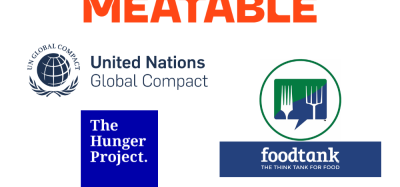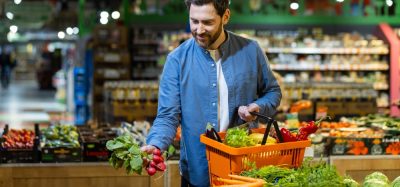Five measures for sustainable, financially sound processing
- Like
- Digg
- Del
- Tumblr
- VKontakte
- Buffer
- Love This
- Odnoklassniki
- Meneame
- Blogger
- Amazon
- Yahoo Mail
- Gmail
- AOL
- Newsvine
- HackerNews
- Evernote
- MySpace
- Mail.ru
- Viadeo
- Line
- Comments
- Yummly
- SMS
- Viber
- Telegram
- Subscribe
- Skype
- Facebook Messenger
- Kakao
- LiveJournal
- Yammer
- Edgar
- Fintel
- Mix
- Instapaper
- Copy Link
Posted: 1 June 2010 | Dr Peter de Jong, Arjan van Asselt, Dr Martijn Fox & Dr Coen Akkerman, NIZO Food Research | No comments yet
In the food industry, it is possible to use new breakthrough technologies to create a more sustainable production process combined with a substantial decrease of production costs. However, the development of these technologies requires a significant investment of time and money. The latter, in particular, is difficult to secure these days. Fortunately, there are some relatively simple measures available to decrease production costs by five to 10 per cent within a single year. Five are presented in this article. In order to obtain a maximised effect it is important to apply all five to achieve optimal production efficiency.
In the food industry, it is possible to use new breakthrough technologies to create a more sustainable production process combined with a substantial decrease of production costs. However, the development of these technologies requires a significant investment of time and money. The latter, in particular, is difficult to secure these days. Fortunately, there are some relatively simple measures available to decrease production costs by five to 10 per cent within a single year. Five are presented in this article. In order to obtain a maximised effect it is important to apply all five to achieve optimal production efficiency.
In the food industry, it is possible to use new breakthrough technologies to create a more sustainable production process combined with a substantial decrease of production costs. However, the development of these technologies requires a significant investment of time and money. The latter, in particular, is difficult to secure these days. Fortunately, there are some relatively simple measures available to decrease production costs by five to 10 per cent within a single year. Five are presented in this article. In order to obtain a maximised effect it is important to apply all five to achieve optimal production efficiency.
NIZO food research has years of experience in the optimisation of processes both within and beyond the food industry. This pertains not so much to the optimisation of logistics and the use of equipment but rather to the production method used to produce the food. Experience showed that in almost any case, opportunities for substantial improvements that lead to quick wins with regard to costs and sustainability are available. For a production line, the savings can amount to hundreds of thousands of Euros per year. Figure 1 provides an overview of the possible ways in which quick wins can be achieved. These have been applied with success dozens of times during recent years. An explanation of each is provided below.
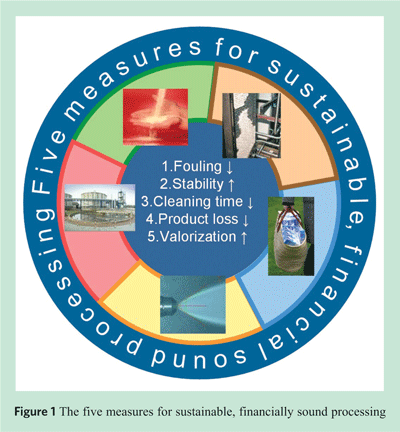
1. Reducing fouling
The capacity of a production line is largely determined by the degree of fouling that occurs during production. Because proteins, minerals and even micro-organisms are deposited on the walls of equipment, the equipment must be cleaned after 10 to 20 hours run time. As a rule of thumb, the run time for production processes below 80°C is determined by the growth of micro-organisms in the equipment and at higher temperatures by the deposition of proteins and minerals. Fouling not only has consequences for the run time but also for the cleaning time, product loss and product quality. Calculations show, for instance, that in the dairy industry, 30-50 per cent of the variable production costs are the result of contamination.
In many cases, the fouling is caused by changes that occur in the product itself during processing, such as denaturation of proteins and growth of bacteria. The extent of these changes is determined by the process conditions. It appears that by adjusting the temperature-time profile during heating of the product (e.g. pasteurisation, UHT) and through – often minor – changes to the equipment, the fouling can be drastically reduced without making any concessions to the product quality (see Figure 2). Computer models such as those used in the NIZO Premia simulation platform assist in determining the optimal conditions for reducing contamination. In the case of heating equipment, evaporators and dryers, this approach has led to a reduction of fouling of 50-80 per cent. In the case of a new product for children, the production time between cleaning cycles could even be extended from two to 12 hours!
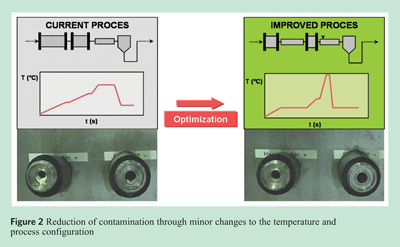

2. Increasing product stability
Although the production lines are obviously designed to produce a stable product, in practice it appears that off-spec products are nevertheless produced every now and then. Often reduced stability of the product is observed, so it no longer has the desired shelf life. The product bulges, sediment is formed, it jellifies or there is increased growth of spoilage organisms. Usually this is detected during the quality control process, but sometimes a recall is necessary. Particularly when new products are put on the market with a different composition than that for which the production line was designed, off-spec production runs can be a big expense item.
Just as with reduction of fouling, it turns out that the product-process interaction plays a decisive role. For example, simply optimising the temperature-time profile offers opportunities for significant savings. The microbial stability can then be increased by raising the maximum heating temperature and simultaneously, elsewhere in the production line, lowering temperatures and shortening residence times. All of these aspects must be precisely correlated with the previously mentioned computer models.
This approach can be used, for example, to increase the stability of products containing coffee and milk. Precise matching of the composition and the heat treatment conditions can extend the shelf life by 10 or more days. The same applies to vegetable and fruit slurries. During heating, the temperature-time combination is selected to attain minimal discolouration with maximum vitamin concentrations while achieving the desired shelf life.
Another real-world example concerns unexpected product spoilage. On multiple occasions, a contamination source has been identified and eliminated using advanced microbiological techniques, such as fingerprinting, in conjunction with computer simulation models and expert knowledge. Subsequently, the process is modified such that the chance of recurrence is minimised.
Increasing the stability also results in (indirect) cost savings. After all, the chance of off-spec production runs is reduced. Furthermore, this also allows more flexibility in the supply chain because the product is now less dependent on the cooling temperature. For products in the fresh segment, cooling costs represent approximately 10 per cent of the total production costs.
3. Improving cleaning efficiency
Once the production process has been improved such that the fouling of the equipment is minimised and product stability is maximised, it is time to take a closer look at the cleaning process. In most food processing companies, 10-20 per cent of the valuable production time is spent on cleaning. The cleaning procedure is usually based on a past catastrophe (worst case) in which the equipment was difficult to clean.
Experience shows that a precise analysis of the cleaning efficiency can result in great savings. The newest trend in this area is what is called ‘intelligent cleaning’ with OptiCIP+. With this approach, the computer determines the most optimal cleaning conditions after each production run and then monitors the progress of the cleaning with sensors in the cleaning liquid. Demonstration projects have shown that savings of 100,000 to 200,000 Euros can be realised for an average production line.
4. Reducing product loss
When the product loss of an average production line with a capacity of 200,000 tonnes of product per year and a product value of EUR 0.5 per kilogram is reduced from 0.6 per cent to 0.1 per cent annually, this represents a savings of a half million Euros per year. Apart from the product-related savings, it also has a direct effect on the amount and fouling of wastewater, since 90 per cent of the total results from the product loss. When a company does not have its own wastewater treatment (or pre-treatment), the reduction of product loss mentioned above also results in savings of more than EUR 150,000 on the discharge costs (example: one kilogram product with 10 per cent Total Dry Solids = EUR 60 per year on wastewater treatment and an average of 2750 kilograms of product is discharged per day). Even when a company does have its own wastewater pre-treatment, savings will be realised through reduced consumption of water purification additives.
A commonly occurring cause of product loss is the incorrect position of valves during product changeovers. This situation can result in a product that should have actually been expelled after production remaining in a tank or pipeline. During the succeeding cleaning, the product is discharged as wastewater. Improved process configuration therefore results in an immediate double benefit: less product loss and lower discharge costs (see Figure 3, page 20).
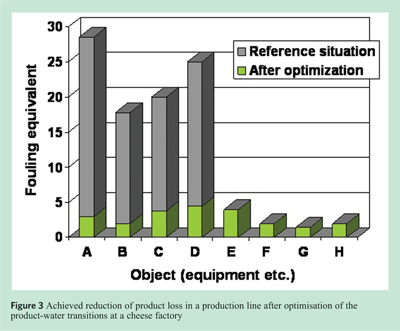

5. Valorisation of waste streams
Every production company has a waste stream which, in principle, contains (somewhat) valuable components that disappear into the sewer and for which various fees must be paid. It is therefore worthwhile to subject the waste stream to a ‘valorisation scan’. The purpose of this scan is to provide a complete analysis of the components and an estimate of their value. Then a study is performed to determine which technologies are required to recover the components from the waste stream and whether this is economically feasible. Examples include fresh vegetable and fruit sauces from cutting waste and the extraction of valuable proteins from meat scraps. The most striking example is probably that from the dairy industry. In past years, whey originating from cheese production (see Figure 4) has been increasingly employed for valuable products: from animal feed to bio-active proteins in sport drinks. The waste streams that remain contain minerals such as calcium, phosphorus and potassium. Research is currently underway to determine whether new concepts for utilising these components are economically feasible.
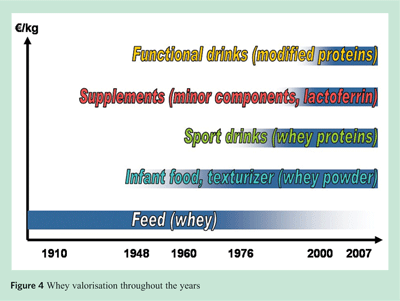

Structured approach
It is clear that there are still various ways to reduce production costs and simultaneously contribute to more sustainable processing. Figure 5 shows a possible approach for realising this reduction. The answers to three questions can make clear where the largest potential lies and how quick wins can be achieved. Experience shows that it is always worthwhile to take a close look at the cleaning procedure and the product-water transitions once a year. Is everything still carried out efficiently and has the amount of product that is flushed down the sewer been kept to an absolute minimum?
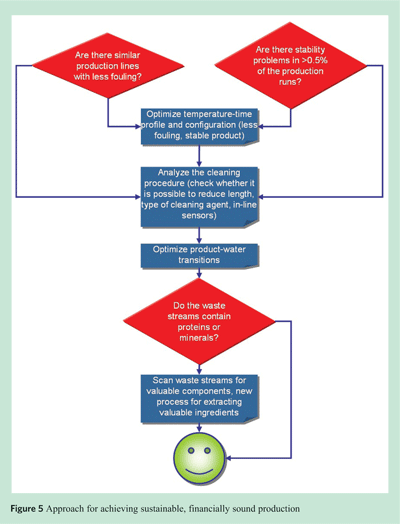

To make optimal use of the savings possibilities, it can be useful to have the scan performed by an external expert.
In conclusion, there are a range of measures that can lead to financially sounder business operations. Minor changes to aspects such as the heating temperature, the cleaning approach and the product-water transitions can be achieved within a matter of weeks or months. Actual projects have shown that these kinds of changes can result in savings of hundreds of thousands of Euros.
References
References on request to the author




